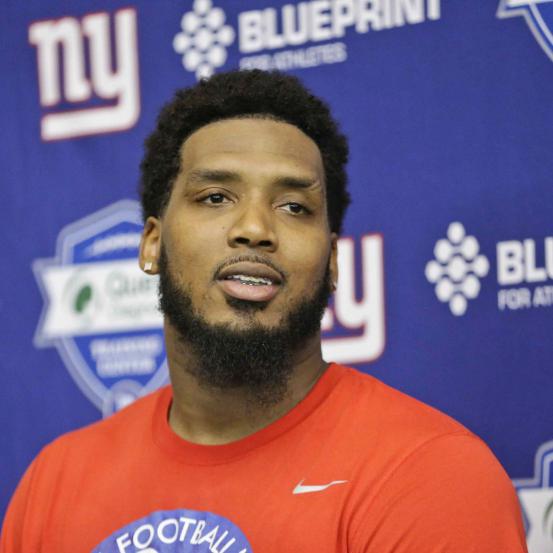- Commissioner’s statement on Ventura, Marte
- Ronnie O’Sullivan: Masters champion ‘felt so vulnerable’ in final
- Arron Fletcher Wins 2017 WSOP International Circuit Marrakech Main Event ($140,224)
- Smith challenges Warner to go big in India
- Moncada No. 1 on MLB Pipeline’s Top 10 2B Prospects list
- Braves land 2 on MLB Pipeline’s Top 10 2B Prospects list
- Kingery makes MLB Pipeline’s Top 10 2B Prospects list
- New Zealand wrap up 2-0 after Bangladesh implosion
- Mathews, Pradeep, Gunathilaka to return to Sri Lanka
- Elliott hopes for rain for Poli
Breaking Down New York Giants’ Situation at Tight End
- Updated: May 16, 2016

In this installment of my New York Giants position previews, I look at the tight ends.
2015 in Review
The Giants’ tight end group that began the 2015 regular season might have lacked star power, but there was little reason to believe that it couldn’t be effective.
That was, at least, until the injury bug tore through the unit. In-line blocking specialist Daniel Fells, who had an ankle injury early in the year, contracted MRSA, which required multiple surgeries to his foot.
Larry Donnell, the starter, would go on to suffer a cracked bone in his neck, something he let slip when he spoke to reporters last month before clamming up on providing further details.
When it was all said and done, no one from this group passed the 500-yard mark in receiving—rookie Will Tye, who wasn’t even on the 53-man roster to start the season, led the team with 464 receiving yards.
By comparison, of the 12 teams that qualified for the playoffs last season, nine of them had a tight end who recorded at least 500 yards receiving, with Kyle Rudolph of Minnesota falling short of the 500-yard mark by five yards.
Then there was the in-line blocking. According to Pro Football Focus, the Giants averaged 3.7 yards per carry when running to both the right and left ends. That average was the second-lowest on the team behind runs that went between the center and right guard.
2016 Outlook: Where Can This Unit Improve?
I’ll let Giants tight ends coach Kevin M. Gilbride answer this question.
“I just think we need to improve as a tight end group as far as our finishing in the run game, and then working those combination blocks with tight ends-tackles,” he told me last month. “That’ll come with the more they continue to do it.”
To that end, it will be important to keep the guys on the field. Besides Donnell and Fells missing time, Tye didn’t join the team until after the season started.
Matt LaCosse was another guy who wasn’t with the team the entire year, so really there is nowhere for this unit to go but up.
“For the most part, as long as the same techniques are being taught to the same men, which they are, typically you can develop as a player, and then the man next to you is going to develop as a player as well, as long as those techniques are being executed,” Gilbride said.
The X-Factor: The Offensive Line
I mentioned the offensive line as the X-factor in my look at the running backs, but it bears mentioning again in this breakdown of the tight ends because the in-line blocking tight end is as much a part of the running game as the offensive linemen.
Offensive coordinator Mike Sullivan was asked by reporters if having a solid and consistent in-line blocking tight end was a missing element in the running game.
“Well, there is so much that goes into the run game and it is not just a particular position group. It can be a variety of factors,” he said. “It is the decisions that the quarterback makes as far as which runs to keep on, which ones to check out of, where to direct the run, it is a combination of the read of the back, it is a combination of the execution of the line.”
Sullivan, perhaps anticipating a follow-up question about rookie Jerell Adams and how he factored into the mix, added to his response.
…
continue reading in source www.bleacherreport.com
